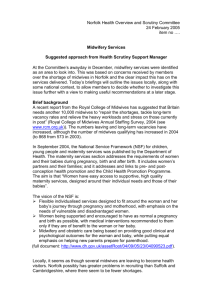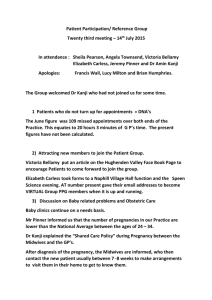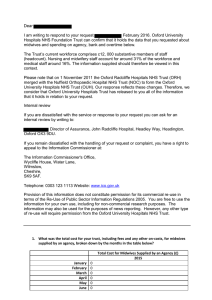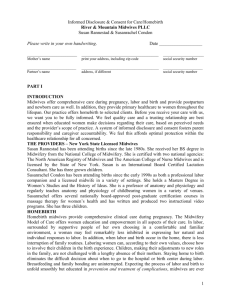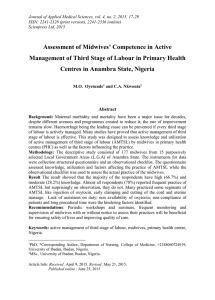Public Health Acts of the 20th Century
advertisement
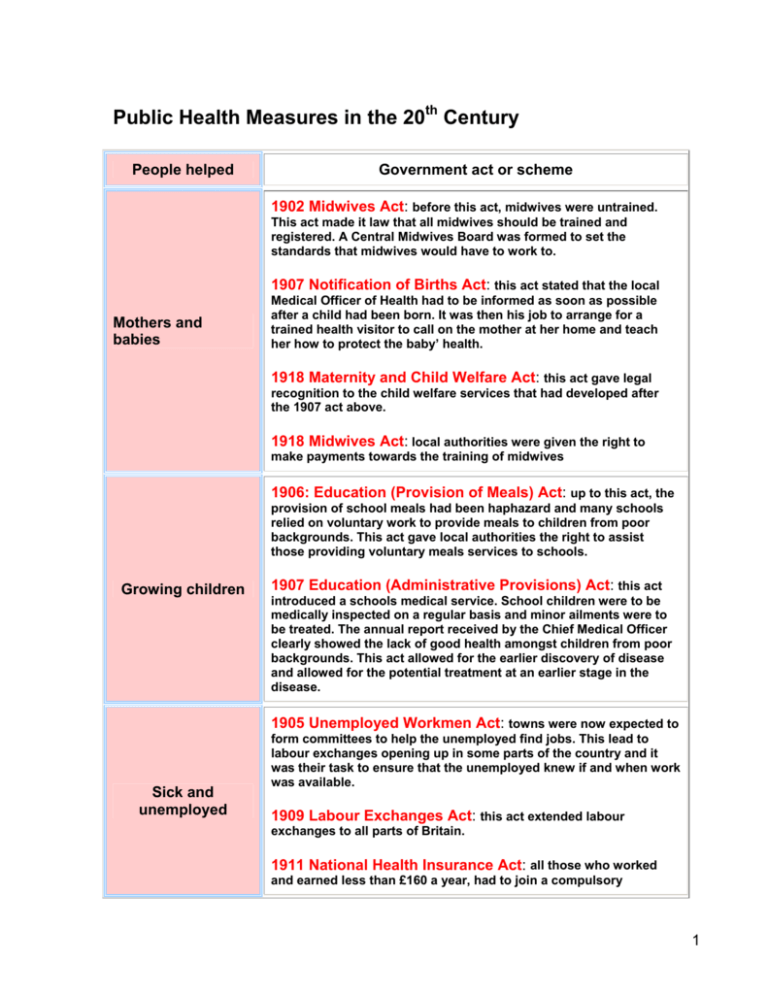
Public Health Measures in the 20th Century People helped Government act or scheme 1902 Midwives Act: before this act, midwives were untrained. This act made it law that all midwives should be trained and registered. A Central Midwives Board was formed to set the standards that midwives would have to work to. Mothers and babies 1907 Notification of Births Act: this act stated that the local Medical Officer of Health had to be informed as soon as possible after a child had been born. It was then his job to arrange for a trained health visitor to call on the mother at her home and teach her how to protect the baby’ health. 1918 Maternity and Child Welfare Act: this act gave legal recognition to the child welfare services that had developed after the 1907 act above. 1918 Midwives Act: local authorities were given the right to make payments towards the training of midwives 1906: Education (Provision of Meals) Act: up to this act, the provision of school meals had been haphazard and many schools relied on voluntary work to provide meals to children from poor backgrounds. This act gave local authorities the right to assist those providing voluntary meals services to schools. Growing children 1907 Education (Administrative Provisions) Act: this act introduced a schools medical service. School children were to be medically inspected on a regular basis and minor ailments were to be treated. The annual report received by the Chief Medical Officer clearly showed the lack of good health amongst children from poor backgrounds. This act allowed for the earlier discovery of disease and allowed for the potential treatment at an earlier stage in the disease. 1905 Unemployed Workmen Act: towns were now expected to Sick and unemployed form committees to help the unemployed find jobs. This lead to labour exchanges opening up in some parts of the country and it was their task to ensure that the unemployed knew if and when work was available. 1909 Labour Exchanges Act: this act extended labour exchanges to all parts of Britain. 1911 National Health Insurance Act: all those who worked and earned less than £160 a year, had to join a compulsory 1 insurance scheme. If they fell ill, they received money as a result of the scheme so that the worker and his family were not too badly hindered by his illness/injury. In some industries where there was a history of unemployment among certain tradesmen, men who became unemployed could draw money from the scheme when they became unemployed. Old People 1908 Old Age Pensions Act: this act tried to do away with the poverty many working class people fell into once they reached a certain age. A pension of 25p per week was paid to single men and women when they reached the age of 70; married couples got about 35p. Anybody over 70 who had some form of income had this deducted from their pension. 1909 Town Planning Act: this act forbade the building of any more back-to-back houses – these had become almost symbolic of the poverty of industrial cities. Local authorities had to prepare schemes of town planning. Builders were now obligated to build homes to certain standards. Slum dwellers 1919 Housing Act: this act attempted to provide "homes fit for heroes to live in". Local authorities were required to provide schemes on how they would achieve this in working class areas. Central government gave financial help for this between 1919 to 1923. 1930 Housing Act: this act introduced a five year programme for the clearance of slums in towns with designated Improvement Areas. Local authorities were forced to provide housing for those who lost their homes during slum clearance. 2
![Letter to MPs re: maternal mental health report Dear [Name of MP] I](http://s3.studylib.net/store/data/006839335_1-7d7b3127aade7ad6d126565942ce75c1-300x300.png)


